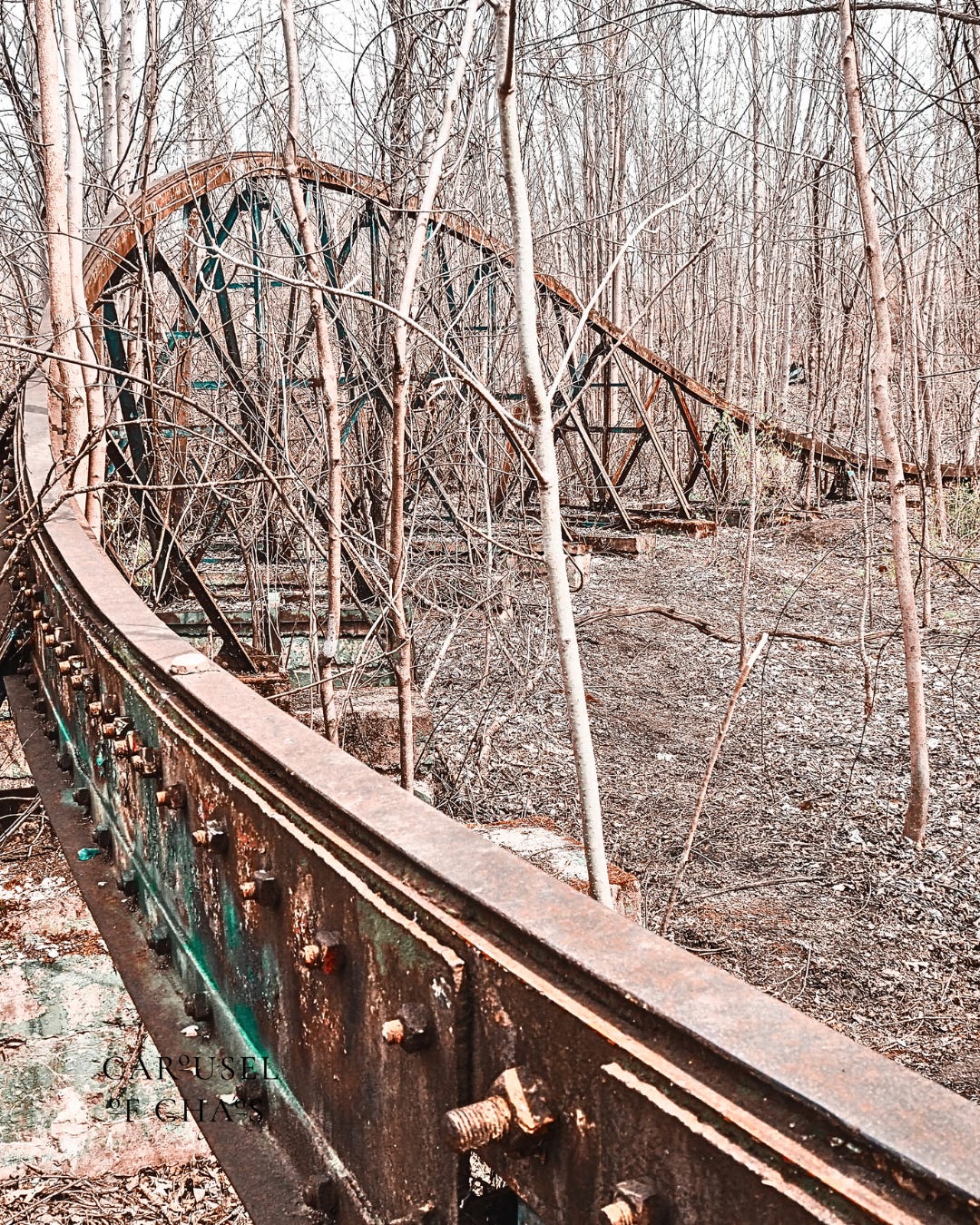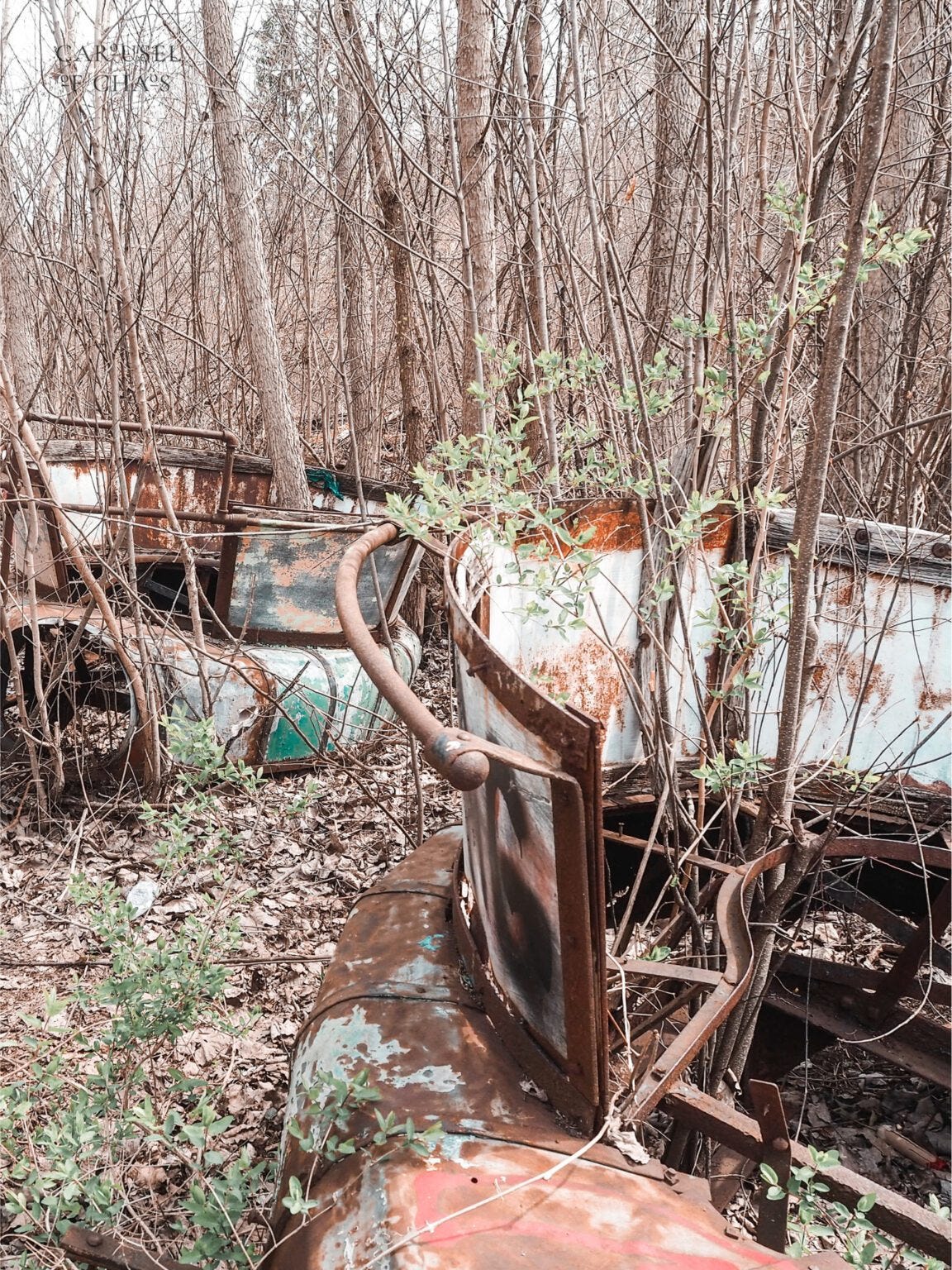Throw a dart on the map. There was an amusement park shuttered there decades ago. How many traces left of it varies, entirely unrelated to importance.
Some of the most prominent amusement parks of yesteryear went ghost without the slightest clue to anyone present today. Parks that founded your hometown, parks that were critically acclaimed, parks that only the fifty people living in the surrounding village knew about — all on level footing in that they can be forgotten no sooner than they closed.
Roundabout, some of the most obsolete amusement parks, that were more like ghost towns when they were still accepting admission, are famous today. Better known for what they became rather than what they were. Other industry headliners, maintaining their fame even through their decay.
There were thousands of amusement parks in the US alone in the 20th century. When they first blossomed in the late 19th, they spread like wildfire across the country. Even in the most remote, seldom mentioned corners of the States, there was at least one amusement park in the vicinity. If not several.
And for the vast majority of them, you’d be hard pressed to find a single thing left of them. Any indication that they ever existed. Although, for more than you know, there are clues you didn’t realize that tip off their fabled being.
Infrastructure laid out a certain way, streets sporting a particular name, a clearing in the trees that never grew back over, an odd hill here or manmade river there… The more inconspicuous leftovers from an era gone by.
But then there are the more obvious ones. Varying from a rusted iron frame of something in the woods, nothing else to indicate what it was from. Or the further, crumbling ticket booths, the distinct profile of a Ferris wheel, the vandalized bones of a roller coaster’s train.
It’s amazing what a treeline can hide.
And it’s an even more interesting notion behind these sites, abandoned amusement parks. Somewhere that once brought great joy to however many countless visitors. A place where your grandparents met in the ballroom or uncle picked up his first job operating carnival rides a little too fast. Something which existed solely to amuse, to make people happy.
When did it stop doing that?
When did society move on past it?
When did amusements no longer amuse?
Truthfully, it’s often the case that these thousands of amusement parks overwhelmed each other.
Before the common man had his own car and endless roadways to traverse wherever, the amusement park a block away did dandy. The train that stopped off outside the ticket gates was a surefire source. It didn’t matter that there was another amusement park 3 miles away, because this one was right here.
But then, cars and highways changed the landscape. The amusement park 3 miles away had a bigger roller coaster. The one 10 miles away was the one the radio mentioned more often. The one 20 miles away was the one Benny Goodman was playing at. The amusement park right here couldn’t keep up when its patrons had options.
Then toll in modernizing amusements, flashier rides, bigger coasters, steel tracks… hope you had the money to follow suit, otherwise the gig was up for you.
All the while, wooden structured everything meant that the lack of any fire safety essentially guaranteed that it was a matter of time before this too burned. Many a parks found their end in the flames. One good fire tearing through and two thirds of the park was gone. No good in salvaging what was left.
The ones that made it to the 70s found a new genre of amusement parks taking shape. These parks had air conditioning, higher tech making for cooler rides, fresh funding for crazier roller coasters. And it was in this blitz that the majority of old, small time local amusement parks dropped like flies.
Which for a good many of them, demolition cost money that no one was eager to spend. So ticket gates got chained up, the doors closed behind them, and the parks got left to rot.
The amusement park near you.
It spent a storied lifetime making memories for people before being disregarded. It has since spent a nightmarish afterlife being consumed by nature, vandals, arson, half baked demolitions, and weathering every storm. Now, any time you search up its name, if search results yield more than a fluke college thesis paper that includes the park’s existence in its footnotes, then those results will be with shiny, high def photos of the park’s worse state.
Photo results will ferry the rotting, creepy looking amusement parks in the woods to the top of the page while any old home photos of the park in its heyday will be throttled to the bottom.
That’s the legacy.
Not of community memories — the couple that met in the park’s ballroom, kids who learned to swim in the park’s lake, college grads who went from selling ice cream to managing the park’s finances — but simply of ghost stories, urban legends, and superficial speculations.
In parts and pieces and scant traces of old, these places have a wealth of stories still untold. It’s still accepting admission. The cost has just traded bills and pennies for someone who will simply listen.










